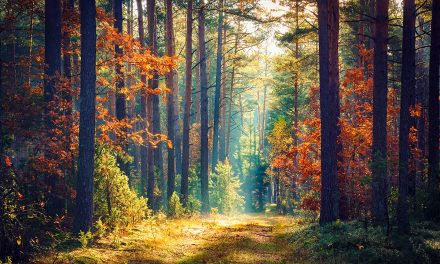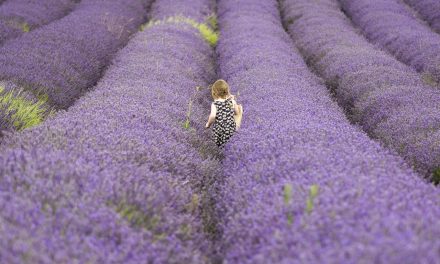Want to capture amazing and breathtaking images? Don’t we all! But while creating unique images in the age of smartphones, digital photography, and social networks may be a challenge –it’s one that can yield exceptional results.
One of the best ways to create eye-catching photos –is by checking your motivation –and making sure that you’re capturing the images for the right reasons.
It may seem somewhat simplistic, but your motivation for creating an image will have a significant impact on the resulting photo. Instead of simply trying to taking photos that “look good” or ones that are “passable” –you’ll want to set the bar higher. Having originality as one of your goals will open up new possibilities for you, helping you to create images that are unique –and allowing you to develop your own signature style.
With this in mind, let’s take a look at a few ways that you can intentionally incorporate originality into your work –and create images that are truly unique –ones that stand out from the crowd.
1. Find Your Inspiration
First things first –discovering your motivation –what it is that inspires you to capture photos, is the first step toward creating original images. What is it that excites you –that motivates you to pick up your camera?
Before you reply with, “Taking great landscapes, of course,” let’s take things a step further.
Ask yourself what it is about photographing landscapes that inspires you –and what it is that you hope to convey through your images? Great landscape photographers are all inspired by something –and it shows through in their resulting, original images. Whether it’s capturing the way a sunrise spills over the horizon or the way the afternoon light highlights the texture of the land –discovering what it is that you’re passionate about; what really drives you will help you to discover your niche, and develop your own unmistakable style.
2. Learn the Basics
It may sound counterintuitive, but mastering the basics –lighting, exposure, and camera settings will prove to be an invaluable part of capturing unique images. The more you know about photography, the more tools you’ll have at your disposal –this will help you to capture the type of images that you’re after, allowing you to more effectively execute your creative vision.
3. Know When to Break the Rules
Many of the well-known compositional rules are there for a reason –they work! In some cases, though, it pays to think outside the box, and to bend or break the rules in favor of creativity. For instance, while the rule of thirds is a helpful guideline, in many cases –a composition may be better served by breaking this rule. For instance, getting closer to the subject –or placing them in the center of the composition can help to create a sense of balance and symmetry, and can work extremely well in some cases.
4. Slow Down
Often, we are in such a hurry to ‘get the shot’ that we miss the opportunity to capture an image that would have been more original. Instead of rushing your photos, slow down. Take the time to take in your surroundings, noting the direction of the sun –the available lighting, and the different potential elements that you could include in the foreground and use to enhance your composition. Be aware of your surroundings; you never know what details could emerge to steal the show.
5. Adjust Your Angle
All too often we take photos with little thought as to whether there could be a better angle –but finding a unique perspective or a different way to capture an often-photographed landmark or structure can often yield better results. Depending on what you are shooting, you might try getting up higher or down lower –or even going off the beaten path to create your image. Capturing the structure from an unusual point of view, or including some interesting foreground into your scenic shots can help you to capture an image that’s far more unique and attention-grabbing.
6. Look for Spectacular Lighting
The right lighting –and the ability to make the best use of available lighting can help to transform your images –causing even everyday objects to look beautiful and unique.
If you can, try to capture your landscapes during ideal lighting conditions. Early morning and late evening –during golden hour is a great time for landscape photography; allowing you to capture your images when everything is bathed in a beautiful golden glow.
Blue hour –just after sunset is another ideal time for creating unique images –photos that have a beautiful and mysterious feel. Finally, the weather can have a significant impact on your resulting images as well –taking photos just before, or after a storm can often present the chance to capture fascinating cloud formations and dramatic lighting.
→ Related reading: Sunrise Photography Tips and Sunset Photography Tips
7. Focus on Your Niche
The best photographers are masters because they spend time –a lot of time, honing their craft. While there’s nothing wrong with dabbling in different niches, finding your own unique, signature style will require lots of practice –and time. Focusing your attention primarily on one specific type of photography will allow you to concentrate your efforts for maximum impact, helping you to dramatically improve your skills in a specific area.
8. Make It Yours
Finally, create original images by doing original things! Include people in your landscapes, draw out often-overlooked details, capture the unusual expression on someone’s face, or get up early to hike to a viewpoint for sunrise.
Challenge yourself to try new things to discover what works. And create unique images by seeking out unexpected gems, being open to unconventional opportunities, and by looking to capture those rare and often-fleeting moments.
We all want to capture amazing images that stand out –but all too often, great opportunities are missed because we neglect to think outside of the box –or lack the motivation to get creative and experiment. But instead of playing it safe and wondering what others might think, always go for the gold. Be daring, and don’t be afraid to try new things –the result will be some exciting images, ones that are original –and all your own.
Are you working to develop your own signature style? How do you incorporate originality into your work?
Photo license links: CC BY 2.0, CC BY-SA 2.0




















These all sound like good tips to keep in mind. I’m going through that ‘identity’ thing, so, this is helpful!
Thank you!
Su